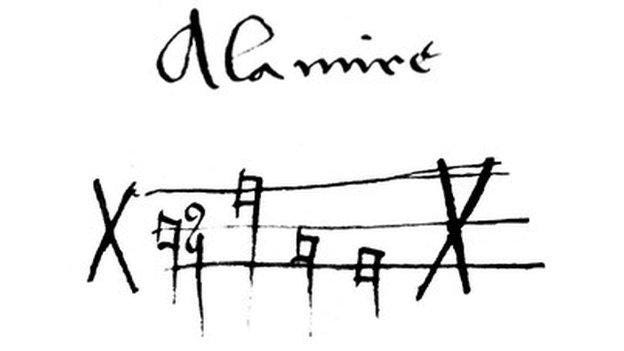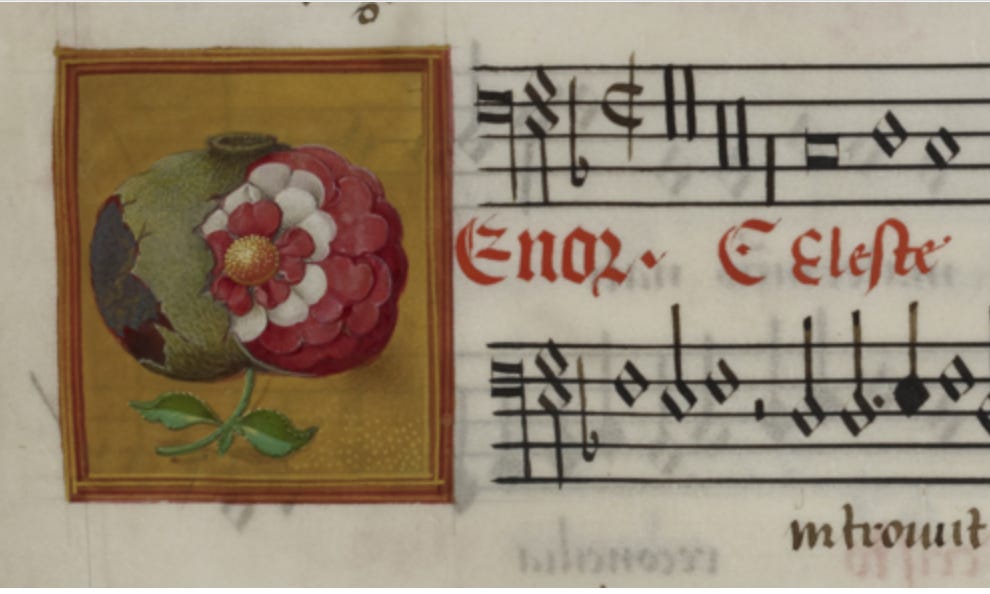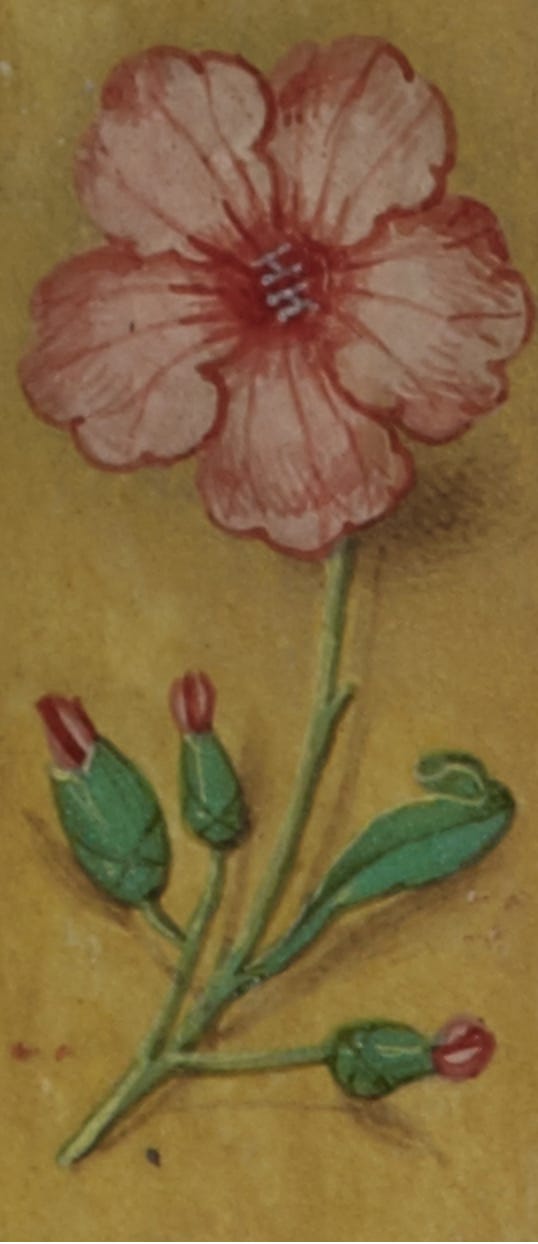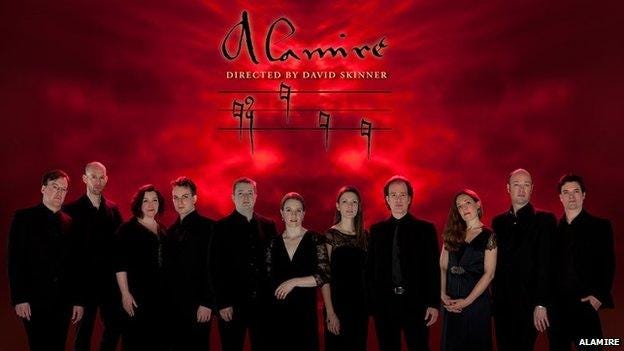The Complex Connection between Henry VIII, a Spy's Choirbook, and the St. Ann Choir of Palo Alto
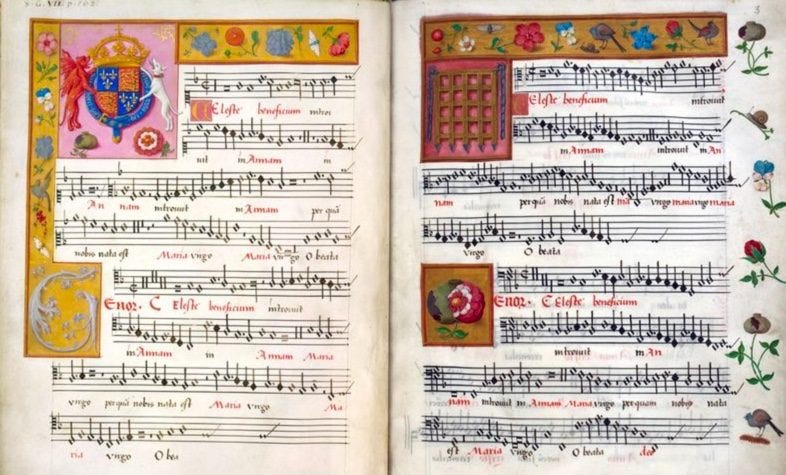
During the Renaissance, there was much demand for the finest art and music of the day in the courts of Europe. Pierre (or Petrus) Alamiré was born in Nuremberg, Germany, c. 1470, to a Dutch family, and he grew up to be one of the many artists and musicians who supplied such works to the royalty who were eager to buy them. Alamiré was a musician. He was also the creator of hand-printed and lavishly illuminated choirbooks, which were produced in a scriptorium he ran. This article is mostly about one of those choirbooks, which is called the King’s Choirbook where it is held in the British Library and is popularly known as the Spy’s Choirbook.
Alamiré’s business model was similar to that of his contemporary Albrecht Durër, of Hungarian descent, who was also born in Nuremberg around the same time, on 21 May 1471. The much more famous Durër was a painter, and he took commissions, but he extended the art of printmaking with more detail and skill than any artist had done before. Durër made most of his living selling multiple copies of his prints, after they were produced in a workshop that was run by his family. Both Alamiré and Durër traveled widely around Europe to solicit commissions and sell their work.
A fascinating twist in Alamiré’s case is that his access to royal courts was perfect for what turned out to be a second identity he assumed, as a spy.
Alamiré’s probable birth surname was van den Hove. In keeping with his double identity, he used Alamiré as a pseudonym, which was cleverly based on the sol-fa musical scale (A+la+mi+re).
At some point, Alamiré was recruited by King Henry VIII to spy on Henry’s remaining Yorkist competitor for the throne of England, Richard de la Pole. Alamiré was later found out to be acting as a double-agent, also spying on Henry for de la Pole, and after that, he never went back to England.
Alamiré’s signature, shown below from one of his reports to Henry VIII, illustrates convincingly that his name was a pseudonym. His signature is accompanied by three musical notes sketched on a stave: La-Mi-Re.
Lovers of traditional music owe much to Alamiré, because we now know many works of Franco-Flemish composers only because they were included in his choirbooks. The motet “Caeleste Beneficium” was one of those compositions.
I learned about “Caeleste Beneficium” when I sang the motet as a member of the St. Ann Choir of Palo Alto for a few years. The motet musically asks St. Ann to intercede with her daughter, Mary, and reconcile us to Christ, her son.
Celeste beneficium introivit in Annam,
per quam nobis nata est Maria virgo.
O beata Deo grata,
Mater matris nati patris.
Anna nos cum filia,
Christo reconcilia."
A heavenly gift entered Anna
through whom the Virgin Mary was born for us
O agreeable blessing from God
Mother of the mother of the child of the father
Anna, with your daughter,
reconcile us to Christ.
The choir sings the motet often, in honor of their patron saint. The late Stanford Musicology Professor William Mahrt, the choir’s director for almost sixty years, told me that the choir managed to keep singing traditional sacred music while that kind of music was virtually banned—only because of St. Ann's intercession.
Kevin Rossiter, a former member who sang with the choir for decades, once told me that the choir sings from photocopies of the score that Prof. William Mahrt, the late director of the choir, copied by hand at the British Library.
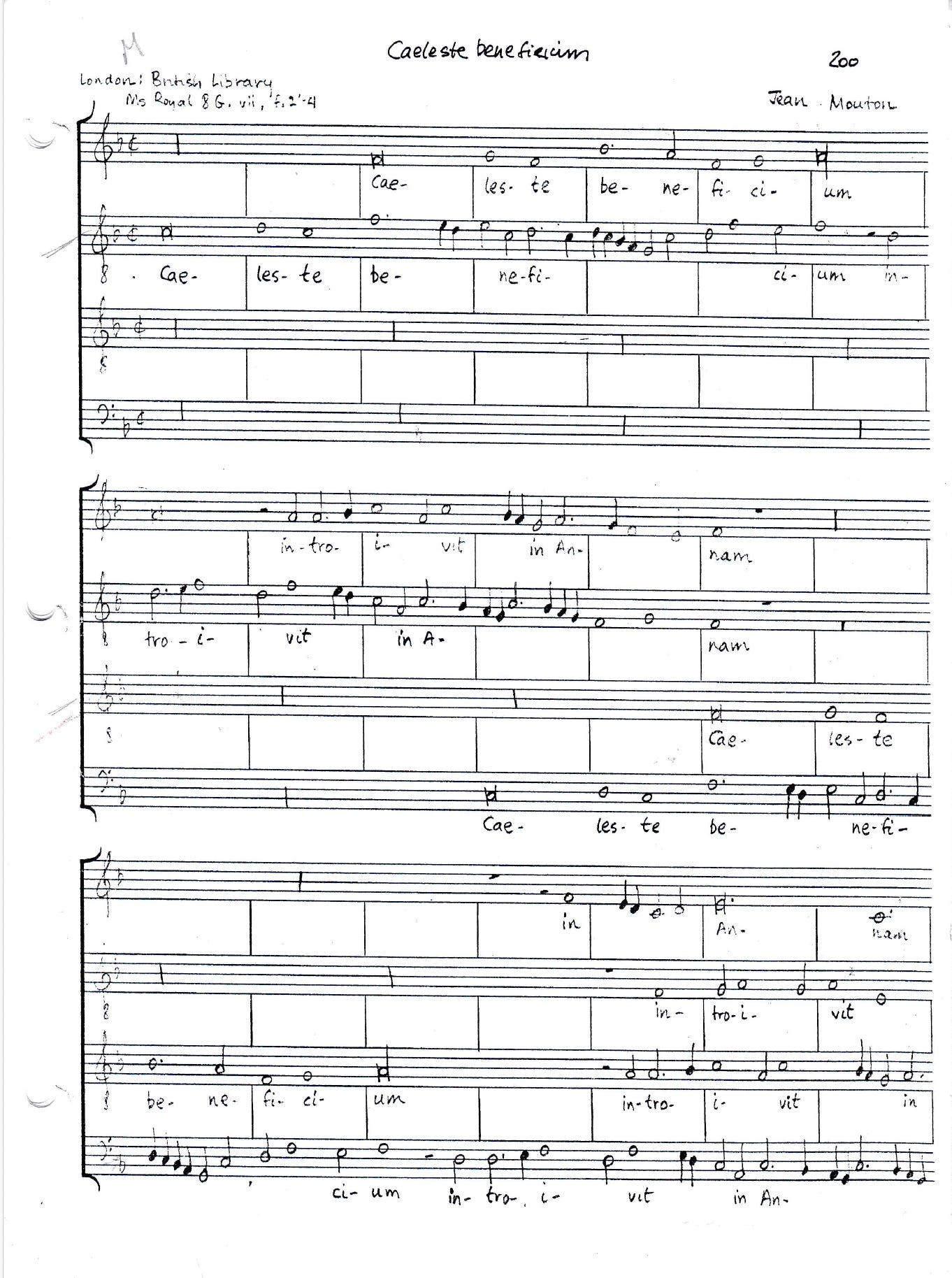
The motet had been composed by Jean Mouton originally for Anne of Brittany and King Louis XII of France, probably on the occasion of the Queen having become pregnant.
One source speculated that the choir book also had originally been intended for the French rulers, but after they both died, Alamiré then gave the choir book to Henry VIII. It’s not clear whether the choirbook was given or sold to the royal couple, or when. One might surmise that it was before Alamiré was exposed as a double agent.
Researchers believe “Caeleste Beneficium” was included in the choirbook with the likely intention of invoking St. Anne’s intercession for the birth of a male heir by Henry’s first (and really his only legitimate) wife, Queen Catherine.
The words of the motet are interpreted to be a plea for the conception of a son and heir, a celeste beneficium, a heavenly blessing to enter into Catherine. Sad to say, we all know how that worked out, but rather, didn’t work out.
But as another source correctly pointed out, the theory that the choirbook was created for the French royal couple is weakened to improbability when you notice that many symbols in the illuminations refer specifically to the English royal couple. Catherine’s emblem, the pomegranate, and the Tudor double rose, which applied to Henry, as son and heir of the first Tudor king, both appear several times.
In the above detail from the illumination, the fusion of Catherine’s emblem, the pomegranate, with the Tudor double rose, refers pretty explicitly to the union of the couple.
Another telling detail is in the center of the flower shown below, an “HK” instead of stamens must refer to ‘Henricus’ and ‘Katharina’.
Alamiré Choir Sings the Spy’s Choirbook
The fifteen-member choir Alamiré and the English Cornett and Sackbut Ensemble under David Skinner recorded all thirty-four motets in the order they appeared in the Spy’s Choirbook and were surprised when it was named the 2015 Gramophone Award Winner. See this page on their website for how to order, if interested.
Back to the St. Ann Choir and “Caeleste Beneficium”
Professor Mahrt died on January 1, 2025. Friends and admirers came from all over the country to sing at his Requiem Mass, and they sang “Caeleste Beneficium” that day.
Here is an amateur recording from July 26, 2019, of the St. Ann Choir singing “Caeleste Beneficium” at their usual yearly Mass celebrating the Feast of St. Anne.
The St. Ann Choir continues under its new director, Erick Arenas. This year, they sang anticipated Vespers for the Feast of St. Ann on July 25. In this video, they are singing “Caeleste Beneficium.”

